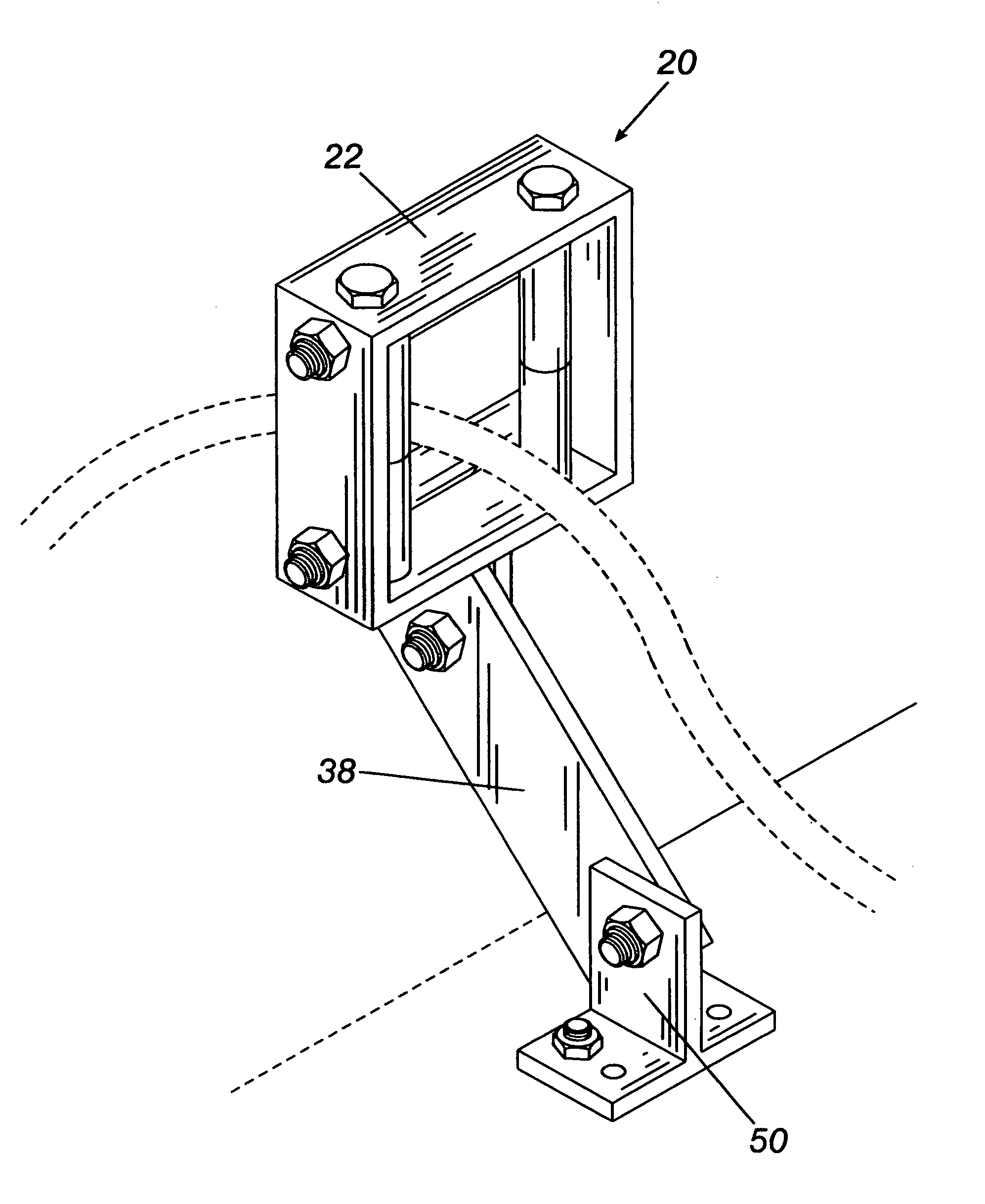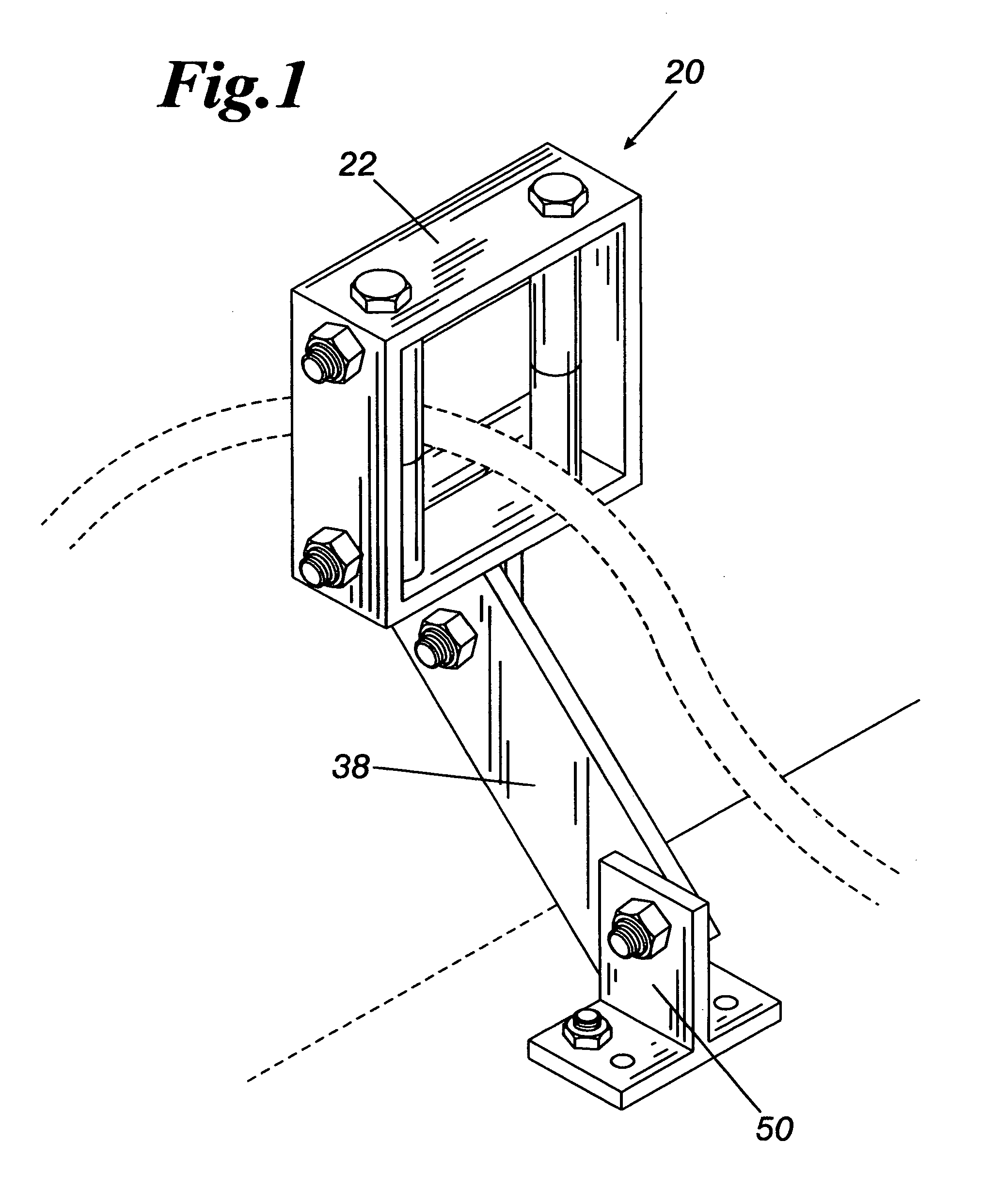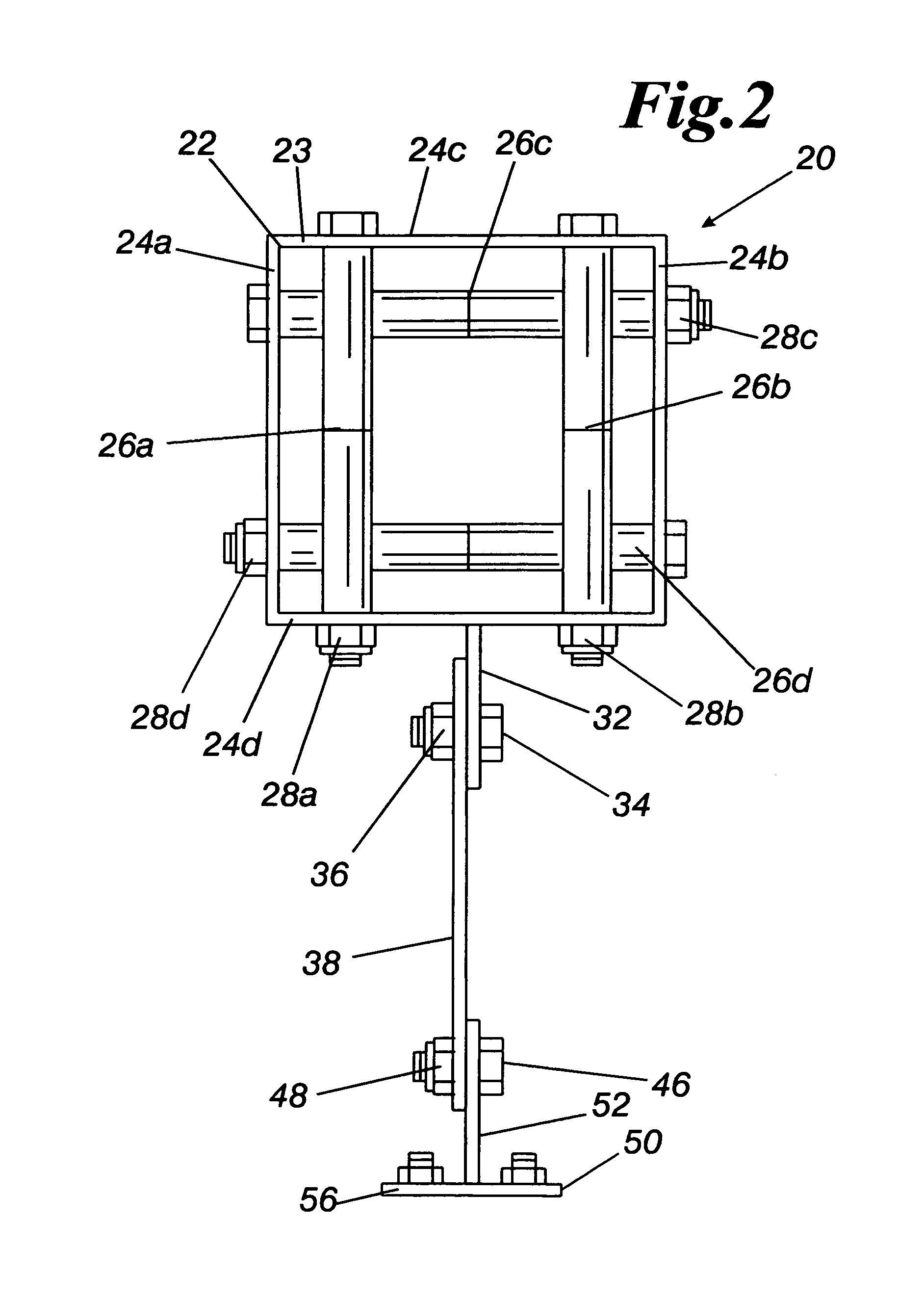Cable, cord, hose, and rope holding device
- Summary
- Abstract
- Description
- Claims
- Application Information
AI Technical Summary
Benefits of technology
Problems solved by technology
Method used
Image
Examples
Embodiment Construction
[0024]Referring now to the drawings and particularly to FIG. 1, the invention is a cable holding device 20 for holding cables when work is performed on roof tops. As used herein, the term cable is to be broadly construed and is inclusive of cables, cords, hoses, ropes, wires, and similar items. The present invention 20 holds cables and allows cables to drape over the edge of a building without touching the terminal edge of the roof.
[0025]The cable holding device 20 is comprised of a body 22 for holding the cables, a mounting bracket 50 for mounting the invention to a roof, and an arm 38 that serves to extend the body 22 beyond the terminal edge of a roof. The body 22 and the mounting bracket 50 are respectively attached to the arm 38 by any conventional means. The mounting bracket 50 cooperates with the arm 38 to extend the body 22 a suitable distance beyond the terminal edge of a roof top, allowing cables held within the body 22 to drape over the edge of a building without touching...
PUM
 Login to View More
Login to View More Abstract
Description
Claims
Application Information
 Login to View More
Login to View More - R&D
- Intellectual Property
- Life Sciences
- Materials
- Tech Scout
- Unparalleled Data Quality
- Higher Quality Content
- 60% Fewer Hallucinations
Browse by: Latest US Patents, China's latest patents, Technical Efficacy Thesaurus, Application Domain, Technology Topic, Popular Technical Reports.
© 2025 PatSnap. All rights reserved.Legal|Privacy policy|Modern Slavery Act Transparency Statement|Sitemap|About US| Contact US: help@patsnap.com



